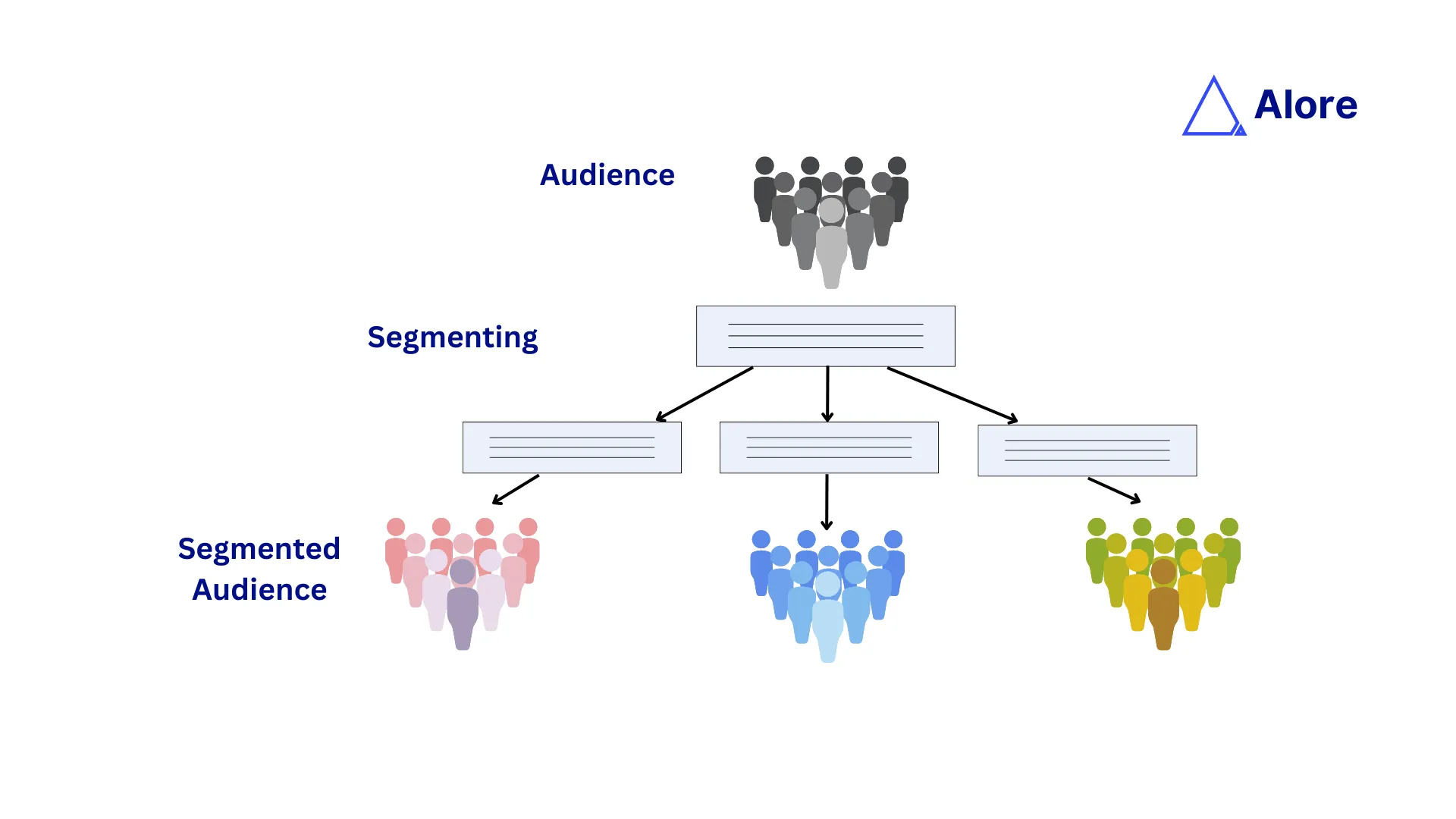Understanding Email Open Rates

You might be thinking, "What's so exciting about email open rates?"
Well, let me tell you, understanding and improving your email open rates is like finding the golden ticket in the world of email marketing.
Open rates are a vital indicator of how well your email campaign resonates with your audience.
It's like the pulse rate of your email marketing campaign, letting you know how healthy and engaging your emails are.
In this section, we'll investigate the email open rates mystery.
We'll explore what they are, why they matter, and, most importantly, how you can optimize your emails to increase them. We'll also delve into industry standards, comparing weekdays and weekends and even the role of time zones.
What is Email Open Rate?
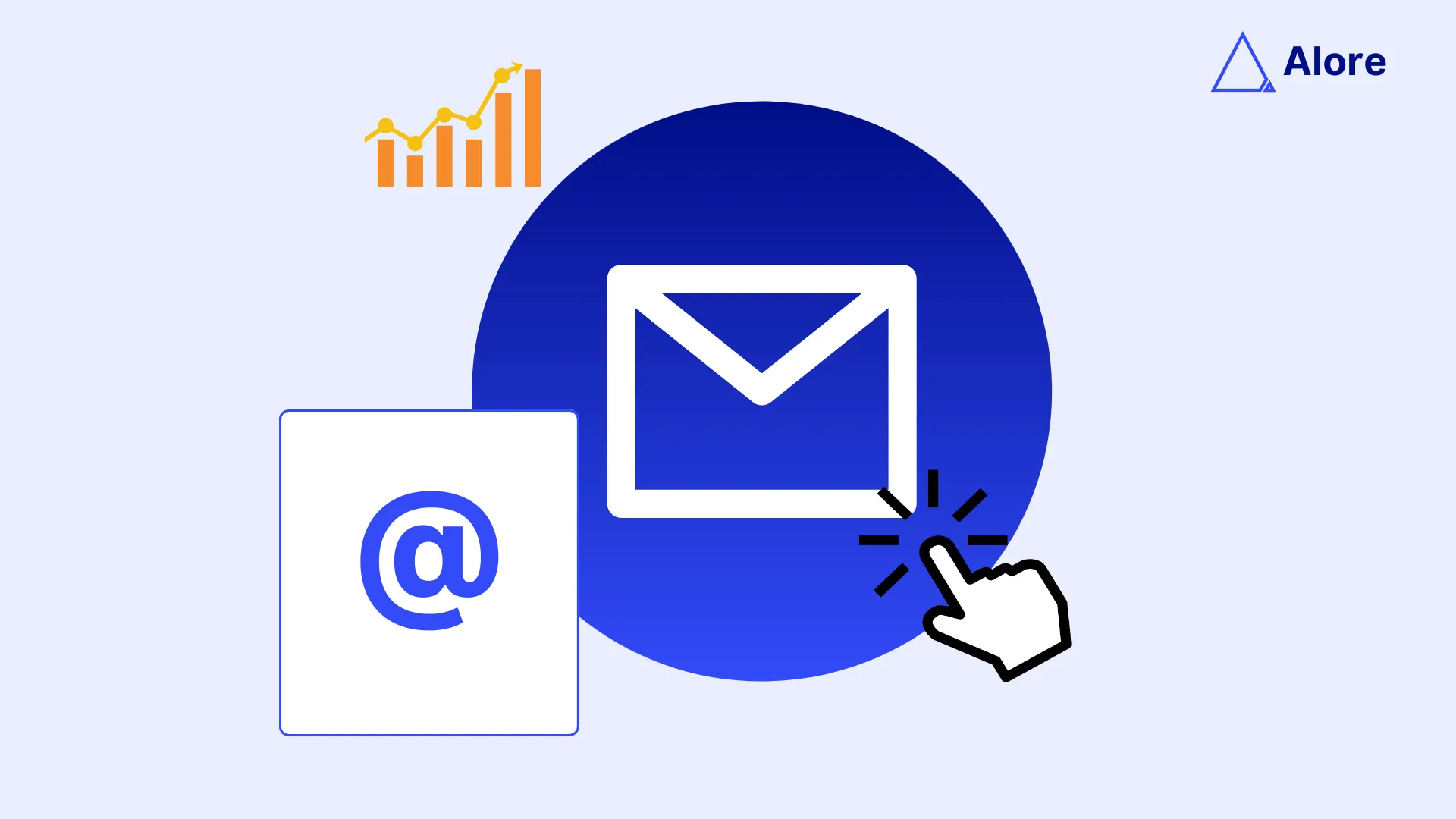
So, you've probably heard the term' email open rate' thrown around a lot in discussions about your email marketing campaigns, but what does it mean exactly?
Imagine you're throwing a party, and you send out 100 invitations.
Now, not all your friends will show up, but some will.
The email open rate is basically how many people showed up at your party - it's the percentage of your email recipients who actually open the email you send.
Think of it like this - if you send 100 emails and 20 are opened, your email open rate is 20%.
Simple, right?
It's a super important metric for you as a marketer because it gives you a snapshot of how well your email strategy is working.
Are people reading your emails or just sitting there collecting digital dust in the inbox?
Factors Affecting Email Open Rates
A few ways these things can affect how many of your emails get opened.
It's not just about having an attractive subject line (though that helps). It's also about the content of your emails, your sender's reputation, and even when you send your emails.
Let's break that down.
Your subject line is often the first thing people see, and a good subject line can spark curiosity and make your email stand out in a crowded inbox. Personalized and personalized subject line lines, like including the recipient's name or referencing something they're interested in, can be particularly effective.
And let's not forget the power of a well-placed humorous email to break the ice and show your brand's personality!
Then, there's the content of your emails.
If you're always offering valuable, interesting content, your subscribers are more likely to keep opening your emails. Plus, it's crucial to maintain a good sender reputation. If you're marked as spam, email service providers might start directing your emails straight to the spam folder, and that's a party no one wants to attend.
Analyzing which subject lines or types of content lead to a surge in numbers can help you strategize to increase email open rates.
To understand how well your message is resonating, measure click through rate, which indicates the number of people who not only open your emails but also engage with the content. By monitoring click through rate and open rate, you can adjust your content strategy to ensure it is as engaging and relevant as possible.
Average Email Open Rate: Insights for 2023
So now that we have a good understanding of what an email open rate is let's delve into some specific numbers for the year 2023.
The average email open rate across all industries is roughly 20%.
However, it's essential to note that this figure can fluctuate greatly depending on the specific industry.
For instance, the healthcare industry enjoys some of the highest open rates, often around 23%.
On the other hand, the retail industry sees an average email open rate of about 18%, while the education sector averages around 21%.
If your business operates in the technology industry, you're looking at an average open rate of about 19%.
These figures provide a benchmark to assess how your email campaigns are faring compared to others in your industry.
However, remember that these are just averages, and various factors can influence your individual email open- rates. These include everything from the quality of your subject lines to the relevancy of your content and the time you send your emails.
The key is to use these industry averages as a starting point, a frame of reference, rather than an ultimate goal.
As long as you're consistently testing, refining, and optimizing your email marketing strategies, you'll be on the right track to maximizing your email open to rates and, ultimately, achieving your business goals.
Comparing with Industry Averages
It's always a good idea to compare your open rates with averages from your specific industry.
This can provide a more accurate measure of how you're doing. It's not the end of the world if your rates are below average. It's an opportunity to roll up your sleeves and work on your strategies.
Remember that while improving open rates is a worthy goal, it's not the ultimate aim.
Your ultimate goal is what you want to achieve through your emails, whether it's driving more traffic to your website, boosting product sales, or increasing brand awareness.
High open rates are great, but remember, they are a means to an end, not the end itself.
If they're not leading to more conversions or achieving your email marketing goals, it's time to revisit your strategy.
Improving Email Deliverability

Your success in email marketing doesn't merely rest on crafting compelling messages; it's also crucially dependent on your emails reaching your subscribers' inboxes.
This is where the concept of email deliverability comes into play.
This section'll explore key strategies for improving your email deliverability.
The Role of List Quality
Imagine sending emails to a list filled with inactive addresses or, worse, addresses that never existed.
That sounds like a recipe for disaster, right?
That's because it is.
The quality of your email list significantly impacts your deliverability.
High-quality lists consist of subscribers who have opted in, engaged with your content and have shown interest in hearing from you. These people open your emails, click through your links, and maybe even forward your emails to others.
In contrast, a low-quality contact list could be filled with inactive or non-existent addresses, leading your emails into the abyss or, even worse, the dreaded spam folder.
If you're noticing a high number of bounces, it might be time to take a good hard look at your list.
If a large number of your emails end up in the spam folder, this could indicate that you're not effectively segmenting your list or personalizing your content
Regularly cleaning your email list and removing inactive subscribers can do wonders for your email deliverability.
Sending welcome emails to new contacts is a best practice for maintaining contact list of quality and ensuring your emails are not marked as spam.
Suppose a contact hasn't engaged with your emails for several months. In that case, they may be longer interested, and it might be worth removing them from your list to maintain high deliverability rates.
Yes, seeing your list numbers decrease might be hard to swallow, but remember, quality trumps quantity when it comes to an email marketing campaign.
Knowing Spam Filters
Another essential factor affecting your email deliverability is your relationship with spam filters.
These are automated systems used by email service providers to protect their users from unsolicited or harmful spam emails. They look at various elements of your emails, including your subject line, content, and sender information, to determine whether your email is spam.
Understanding how spam filters work can be a game-changer to increase email open rates, as it allows your emails to reach the recipient's inbox rather than being relegated to the spam folder.
For instance, if you're using all caps or exclamation marks in your subject lines or sending from an email address that has been reported for spam, your email might end up in the spam folder.
So how can you build a friendly relationship with spam filters?
By being a responsible email marketer.
That means following best practices like using a reputable email service provider, ensuring your list consists of opt-in subscribers, and avoiding the use of spam trigger words in your content.
Remember, spam filters work differently on mobile devices, so ensure your email content is optimized for both mobile devices and users on these platforms to avoid being flagged as spam.
Pro Tips for Email Deliverability
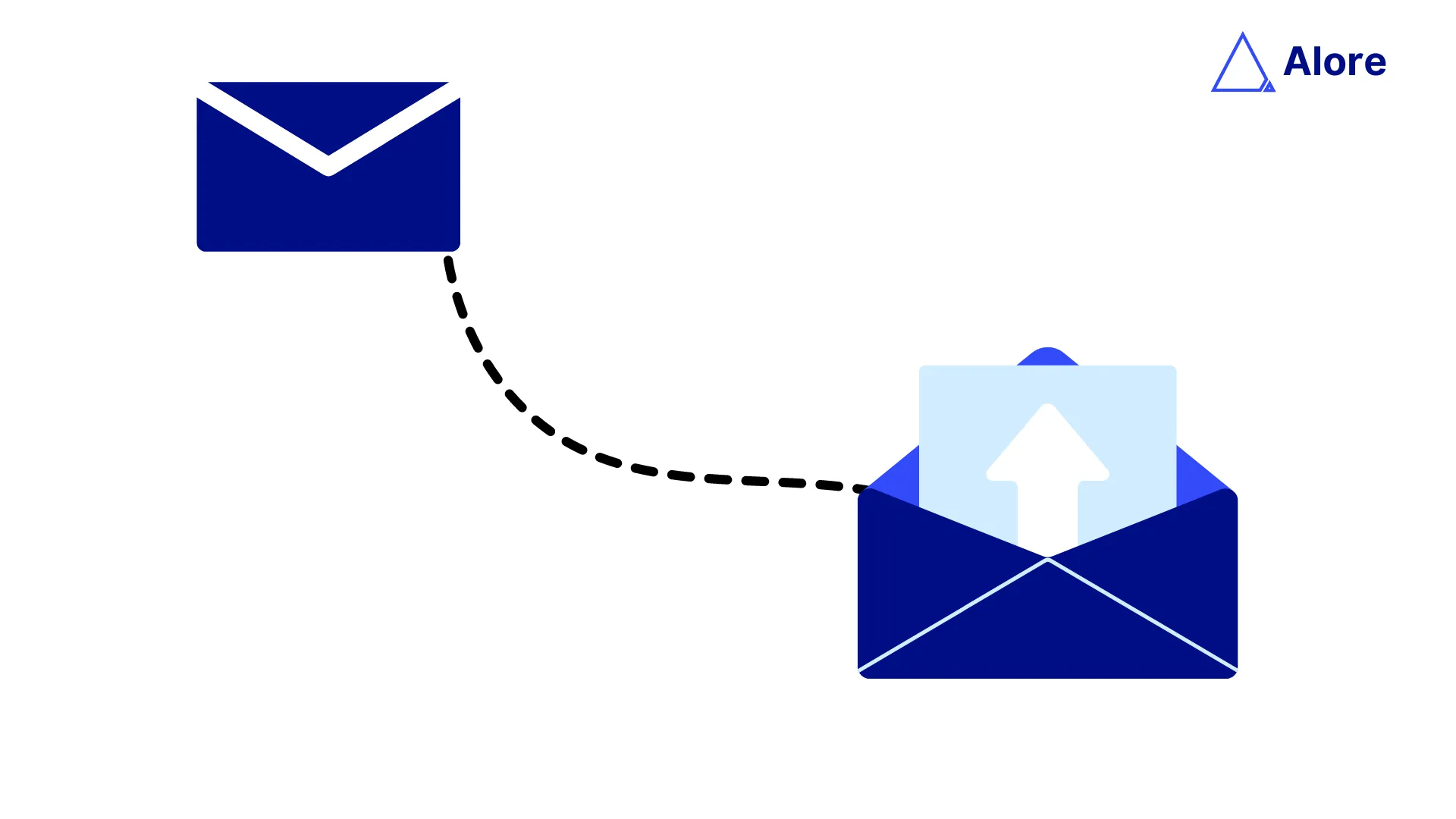
A good IP address is crucial for ensuring your emails are delivered, as a poor sender reputation can result in your messages being blocked or sent to the spam folder. Keeping track of emails delivered is an important metric in understanding the effectiveness of your whole email campaign and marketing efforts.
Here are some pro tips to take your email deliverability to the next level:
- Use a recognizable sender name: Your subscribers are more likely to open emails from senders they recognize. So, make sure your sender name reflects your brand.
- Maintain a consistent sending schedule: Regular email sending can help improve your sender reputation, positively influencing your deliverability.
- Always include an unsubscribe link: It's not just a best practice but a legal requirement in many jurisdictions. An unsubscribe link allows subscribers to opt out easily if they no longer wish to receive your emails.
- Use double opt-in: This process requires new subscribers to confirm their email addresses before they're added to your list. It can significantly improve your list quality and, in turn, your deliverability.
Why we recommend Against Purchasing Email Lists
If you're tempted to fast-track your email marketing efforts by purchasing email lists, we urge you to reconsider.
Buying email lists can harm your sender reputation and your relationship with email service providers. After all, these people didn't opt-in to receive your emails, which means they're more likely to mark them as spam or ignore them altogether.
Building your own email list may take more time and effort, but it's worth it.
Your list will consist of people who are genuinely interested in your brand and are more likely to engage with your emails.
Testing for Gmail's Promotion Tab

Gmail's promotion tab can be a blessing and a curse for email marketers.
It helps keep promotional emails separate from the primary inbox, reducing clutter for users. However, for marketers, their marketing emails are also less likely to be seen immediately by their subscribers.
Testing how your emails fare with Gmail's promotion tab can give you insights into improving your deliverability.
Are your emails landing in the primary inbox or the promotions tab? It might be time to tweak your strategy if it's the latter.
Consider personalizing your emails more or reducing the number of promotional words in your content. Remember, every email client is different, so what works for Gmail might not work for Outlook or Yahoo.
In conclusion, think of email deliverability like getting into a VIP club.
Sure, you've got your shiny shoes on (those great email content), and you've practiced your smoothest moves (your killer call-to-actions), but none of that matters if you can't sweet, talk your way past the bouncer (those pesky, spam filter filters).
So, keep your guest list (email list) tight – filled with the people who actually want to party with you.
And remember, buying your way into popularity (purchasing email lists) is a big no-no; it's more likely to land you in email jail than the VIP lounge.
As for dealing with Gmail's Promotion Tab? Think of it as your own private room in the club. Some people might take a while to find it, but once they do, they're there because they really want to be.
So, keep refining your strategy, keep your eye on the ball, and most importantly, keep the faith. Remember, Rome wasn't built in a day, nor is stellar email deliverability.
Keep at it; soon enough, you'll be partying it up in the inbox club, VIP style!
Crafting the Perfect Email

We're about to dive into the art of Crafting the Perfect Email.
Think of it like baking a cake - it’s all about getting the right mix. Relevant content, timing, engaging writing, opt-ins, and impactful images - it's all going into our mixing bowl.
The Power of Relevant Content

Let's start with a little secret, shall we?
The magic key to effective email marketing is not some ultra-sophisticated tool or groundbreaking technology.
It's something much simpler yet extraordinarily powerful – it's relevant content.
Yes, you heard that right!
It doesn't have to be only amazing content, but it has to be relevant content. It's about delivering value that resonates with your audience.
Think about it: wouldn't you be more likely to open, read, and engage with an email that feels like it was tailor-made just for you?
Relevant content is crucial in attracting and retaining your audience's attention.
For instance, welcome emails have been shown to generate up to 320% more revenue per email than other promotional emails, indicating their power to create a strong first impression.
One of the important factors to consider while creating relevant content is the context in which your audience will be reading your emails.
A survey conducted by MarketingSherpa found that 58% of consumers start their day by reading emails before doing anything else online. But here's the catch - they're likely to skip over generic, irrelevant messages. The competition in their inboxes is fierce, so you need to make your content stand out.
To create relevant content, you need to understand your audience deeply. What are their needs, interests, and pain points? Answering these questions is your first step toward crafting emails your subscribers can't resist.
Remember, according to research by Experian, personalized emails deliver 6x higher transaction rates.
Creating content that speaks to the needs and interests of your audience is a proven way to increase email open rates.
Timing is Everything: Sending Your Emails at the Right Moment

The saying "timing is everything" doesn't just apply to romantic comedies and sports - it's equally relevant regarding email marketing campaigns.
The exact moment you hit 'send' can significantly impact your email open rates.
You want to land in your subscriber's inboxes when they're most likely to be checking their emails, right?
Various studies suggest that weekdays are the best days to send emails, especially Tuesdays, Wednesdays, and Thursdays. Comparing weekdays versus weekends for your email campaign sends may yield different results based on your audience's lifestyle and work habits
As for the time, it seems that mid-morning (around 10 am) and mid-afternoon (around 2 pm) work quite well.
But remember, these are general observations and might not apply to your specific audience. The key is testing different days and times to find the best.
A tool like Google Analytics can give you insights into when your email subscribers are most active, and an email service provider (ESP) can help you automate your send times. Paying attention to when your audience is most likely to check their inbox can significantly increase email open rates.
It's also crucial to consider different timezones if your audience is spread across the globe; it could be the huge difference between your email being seen or missed.
Also, consider that many people check their emails on mobile devices throughout the day, so ensuring your email is mobile-friendly can greatly influence the best time to send emails.
Remember, with emails, timing is everything!
Strategies for Writing Engaging Emails
Crafting an engaging email is an art. It requires a mix of creativity, a deep understanding of your audience, and a knack for compelling writing. Here are some strategies you can use:
- Subject Lines that Spark Interest: Your subject line is the first thing your recipient sees. Make it count. Use it to spark curiosity, provide a clear benefit, or make an irresistible offer.
- Preview text is often overlooked, but it offers an additional opportunity to engage your readers before they open the email. Personalize your preview text for new contacts to increase open rates and click-through rates.
- Personalization: Addressing your reader by their first name can create a powerful connection. But don't stop there. Tailor your content to match their interests, behavior, or past purchases.
- Clear and Concise Copy: Remember, less is more. Stick to one main idea per email. Make your sentences short and your language easy to understand.
- Strong Call-to-Action (CTA): What action do you want your readers to take after reading your email? Whether it's to purchase a product, read a blog post, or sign up for a webinar, make it clear with a strong CTA.
Understanding the nuances of various email clients can also play a part in crafting engaging emails for mobile users, as some clients may display your content differently.
Leveraging Opt-in Forms and Double Opt-ins

You know what they say - the money's on the list.
But to build that list, you'll need a solid strategy for collecting email addresses. This is where opt-in forms come into play. An opt-in form is a tool that allows visitors to your website to become an email subscriber to your marketing content.
For instance, you can use a pop-up form that appears when a visitor lands on your site or a static form embedded in your site's footer or sidebar. Best practice dictates that your opt-in form should clearly explain what the subscriber will get in exchange for their email address. Will it be a free eBook, weekly tips, or exclusive discounts? Make it clear and make it enticing!
Now, what about double opt-ins?
A double opt-in process includes an additional step where subscribers must confirm their email address before being added to your list. This method ensures that you only have engaged and interested subscribers, which can lead to higher open and click-through rates.
Double opt-ins can help you verify that the number of people who sign up for your email list is interested in your content, which helps maintain high engagement rates.
Once you've gathered a substantial number of subscribers, it's crucial to segment your list based on factors like demographics, behavior, or engagement levels. This will help you deliver more targeted and relevant content to your audience.
Using Optimized Images for Impact
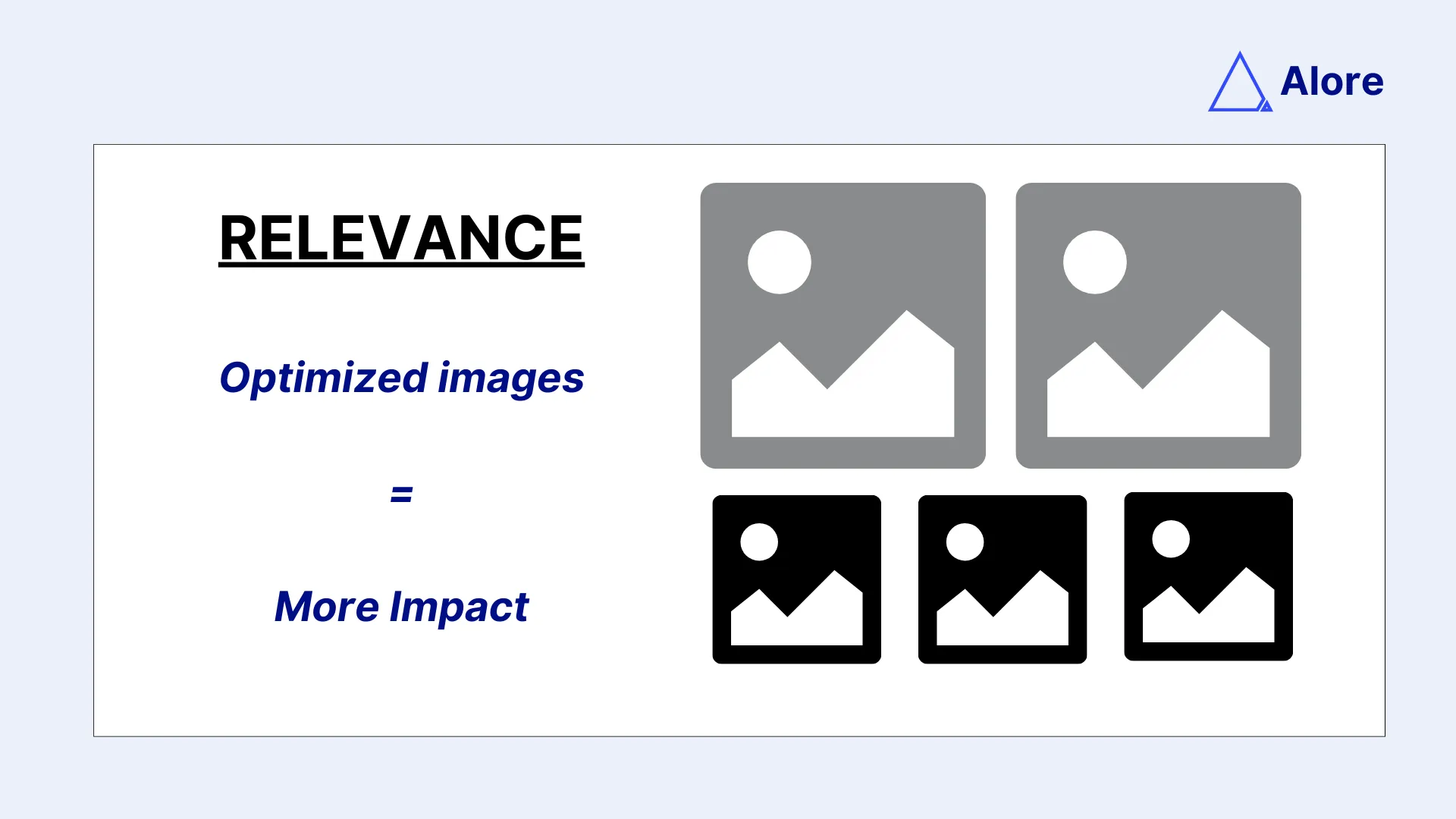
Visuals can make your emails more engaging and memorable. However, using images in emails isn't as simple as dropping in a random stock photo.
For one, you should ensure your images are optimized for email. That means they should be the correct size (not too large, which might slow down loading times, and not too small, which might look pixelated).
Moreover, it's a good idea to use alt text for images, which will display a description of the image if it doesn't load or the reader uses a screen reader.
Appropriately using and optimizing images can significantly increase your email open rates, as visually appealing emails are often more engaging for readers.
Keep in mind that images may load differently on mobile devices, so always test how your email looks on different platforms to ensure maximum impact.
But more importantly, your images should be relevant and add value to your message. Use them to break up your text, explain complex ideas, or showcase your products. And don't forget about the power of infographics for sharing statistics or processing information.
Mastering the Art of Email Subject Lines
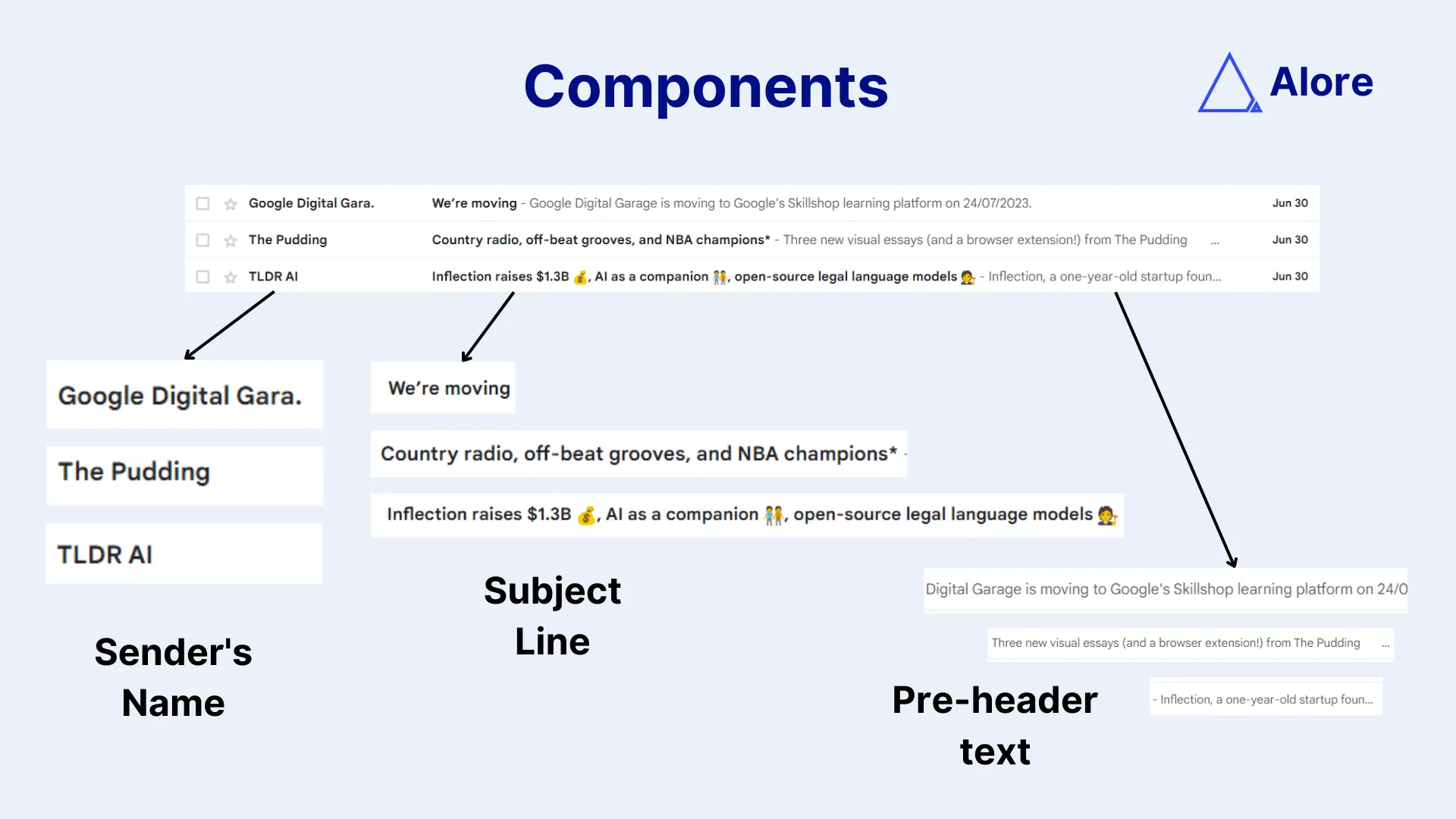
Email subject lines - they're like the headline of a news article, the cover of a book, or the flashy sign in a store window. They're that crucial first impression that can make all the difference between a recipient opening your email or letting it fall into the abyss of their inbox
The Role of Subject Lines in Open Rates

Imagine your email as a wrapped gift.
It might contain something delightful and valuable inside, but if the packaging is dull and uninspiring, the recipient might never unwrap it.
In email marketing, your subject line is that packaging.
A compelling subject line can significantly boost your email open rates.
In fact, 47% of email recipients decide whether or not to open an email based on the subject line alone, according to OptinMonster. That's nearly half of your recipients! Therefore, if you want your emails to be read, you must master the art of crafting magnetic perfect subject line or lines.
Curiosity-Driven Subject Lines
Curiosity, my friends, is a powerful thing.
It's the driving force that leads us to learn, explore, and click on email subject lines.
Yes, you heard right; your subject lines can leverage the power of curiosity to drive higher open rates.
How do you do that?
It's about creating a sense of intrigue while not giving away too much information.
Your goal is to make your readers think, "Hmm, I wonder what that's about." For instance, a subject line like "You won't believe what we found out!" will likely pique curiosity and encourage the recipient to click through to read more.
Remember though, a curiosity-driven subject line is a promise of exciting content.
Make sure your email delivers on that promise.
Nothing can lose a reader's trust quicker than a clickbait subject line that leads to boring content.
The Success of Personalized Subject Lines

In the digital age, personalization is not just nice to have; it's a must.
When you personalize an email subject line, tell your recipient the email was crafted specifically for them.
Research backs up the power of personalization. According to a study by Campaign Monitor, emails with personalized subject lines are 26% more likely to be opened.
Personalization can be as simple as including the recipient's name in the subject line or as sophisticated as tailoring the subject line based on past purchase behavior or interests.
Remember, though, personalization should be genuine and relevant. Forcing a personal connection where there isn't one can come off as insincere or creepy. So, tread lightly and use your data wisely.
Unique Subject Line Strategies: Humor, Shock, and Offers
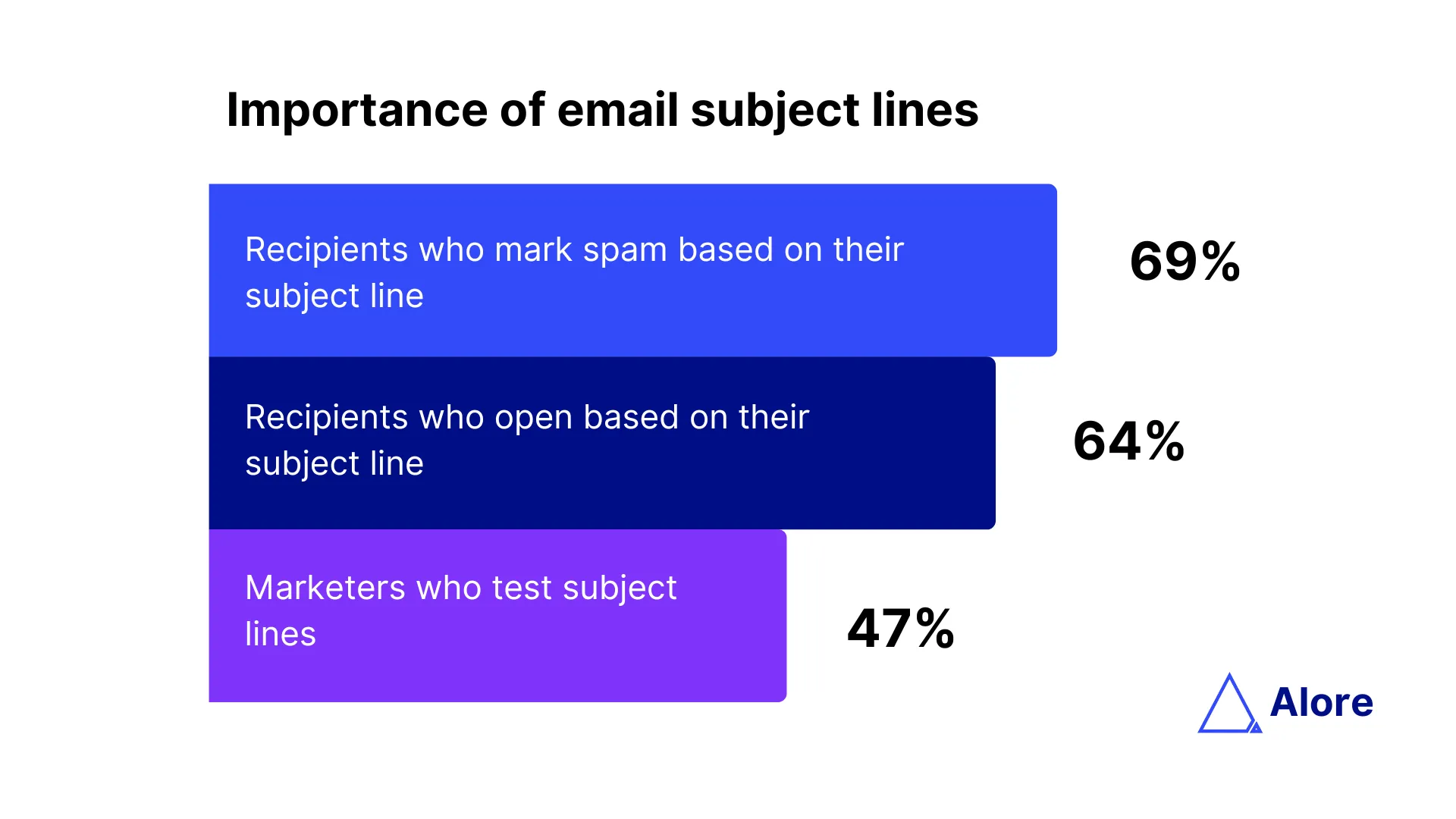
Adding a dash of humor, a sprinkle of shock, or a hefty helping of a special offer can work wonders for your subject lines.
Let's break down each of these strategies.
Humor
We all love a good laugh, don't we?
If you can make your recipient chuckle, you've already made a connection.
A funny subject line can stand out in an inbox full of serious business messages. But remember, humor is subjective. What's funny to one person might not be to another. Know your target audience very well before going this route.
Shock
A little bit of shock or surprise can create a powerful urge to click through.
Something like "The marketing advice you've been following is all wrong" might make your reader think, "Wait, what? I need to see this!"
Offers
Who doesn't love a good deal?
If you're offering a discount or a special promotion, don't be shy about it.
Put it right there in the subject line. For example, "Flash Sale: 50% off all items today only!"
If you're eager to delve deeper into the art of crafting compelling subject lines, we've got just the resource for you.
Check out our in-depth guide, complete with ready-to-use subject line templates.
Here's the link you need: www.alore.io/blog/how-to-write-subject-lines-for-cold-emails.
Go ahead, soak up the knowledge, and start penning down subject lines that get those emails opened.
So, off you go, and happy subject line crafting!
Exploring A/B Testing for Emails
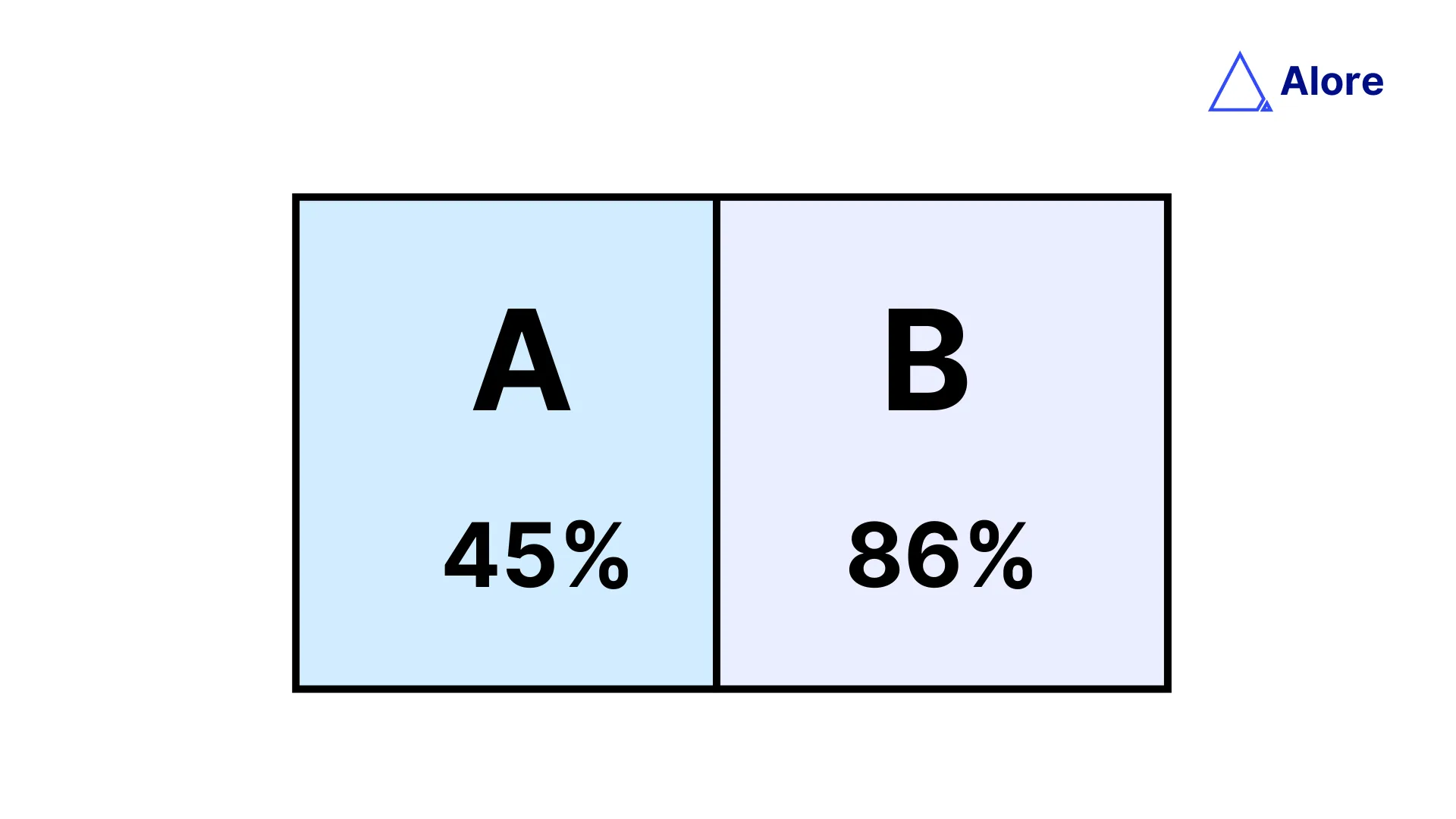
Alright, let's switch gears a bit and dive into an exciting and potent tool that's guaranteed to elevate your email marketing game – A/B testing for emails. If you've ever found yourself caught in a toss-up between two subject lines or two different layouts, this is just the lifeline you need.
A/B testing, also known as split testing, allows you to conduct an experiment with two different versions of an email to see which one performs better. It's like a virtual duel between two gladiators, where the champion earns the privilege of being sent to the rest of your audience.
In this section, we'll explore the art of A/B testing, the mechanics behind it, and how it can help boost your open rates, click-through rates, and, ultimately, your conversions. We'll even touch on some best practices to ensure you're conducting your tests effectively.
Decoding A/B Testing in Email Marketing

You might think that marketing is all about the big picture. It's about engaging graphics, compelling calls to action, and well-crafted stories. You're not wrong, but there's another side to this: the nitty-gritty. You see, sometimes, the smallest tweak can significantly impact your campaign's success. And that's where A/B testing swoops in to save the day!
A/B testing, or split testing, is like having your own email marketing lab. Picture this: you're a scientist, your email campaign is your experiment, and your subscribers are your test subjects. Now, don't worry, no lab coats or safety goggles are needed in this experiment. You're just comparing two versions of an same email campaign to see which one performs better.
The versions, referred to as version A and version B, are sent out to different subsets of your email subscribers. Version A might have a quirky, funny subject line, while version B goes for a more serious news headline style. You then sit back, relax, and let the data roll in. Which email gets more opens, clicks, or conversions? The answer will help you craft better, more effective emails in the future. It's like magic but with data!
The Impact of A/B Testing on Open Rates

So, why should you even care about A/B testing?
One word: open rates.
Picture this: you've spent hours, perhaps even days, crafting the perfect email.
You've poured your heart and soul into every word, every image, and every call-to-action.
But then, it lands in your subscribers' inboxes and... crickets.
Nothing.
No opens, no clicks, just digital silence.
Heartbreaking, right?
Well, A/B testing can help you avoid this email marketing tragedy. By testing different versions of your email, you can gain valuable insights into what makes your subscribers tick. What kind of subject lines grab their attention? What kind of content keeps them engaged? What kind of calls-to-action make them click? All these answers lie in the heart of A/B testing.
Just to give you an idea of how powerful A/B testing can be, a report by HubSpot revealed that A/B testing emails can increase email open rates by by up to 30%! So, if you're not A/B testing your emails, you might just be leaving potential engagement (and sales) on the table.
Implementing A/B Testing: Techniques and Considerations
Alright, you're convinced. A/B testing sounds fantastic. You want in. But how do you get started? First, decide what element of your email you want to test. It could be anything: your subject line, your header image, your call-to-action, or even the color of your "buy now" button. But this is crucial, only test one element at a time. Otherwise, you'll have no idea which change led to any differences in your results.
Once you've picked your test element, it's time to create your two email versions. Remember to keep all other aspects of the email identical. This way, you can be confident that any changes in your results are due to the element you're testing and not something else.
Next, split your subscriber list into two equal and random groups. This isn't the time for favoritism; both groups should be as similar as possible. This is crucial because you don't want any other variables (like age or location) to skew your results.
Then, let the games begin! Send out your emails and wait. Yes, waiting can be hard, but it's important to give your test enough time to generate meaningful results. Once enough time has passed, take a good, hard look at your data. Did version A or B perform better? What insights can you glean from this? What can you learn and apply to your future campaigns?
And voila! You've just completed your first A/B test. But remember, A/B testing isn't a one-off thing. It's an ongoing, continual process. It's about constantly striving for better, more effective emails. And with each test, you'll be one step closer to email marketing perfection.
We've barely scratched the surface of A/B testing in this article.
If you want to dive deeper and learn more about A/B testing and how to implement it effectively, check out our detailed guide here: https://www.alore.io/blog/the-right-a-b-testing-strategy-for-email-success.
Email List Segmentation and Management
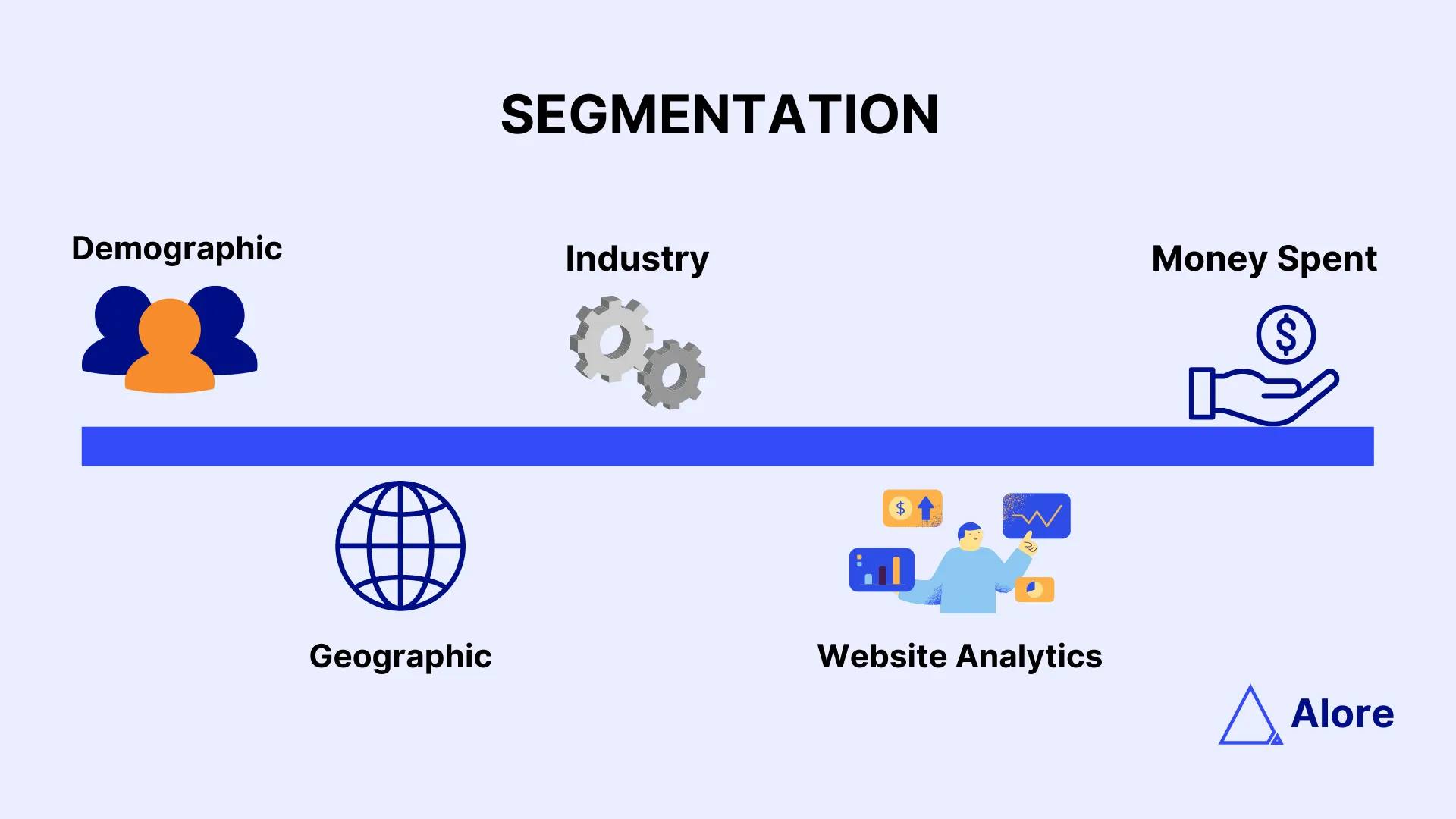
Why Email List Segmentation Matters
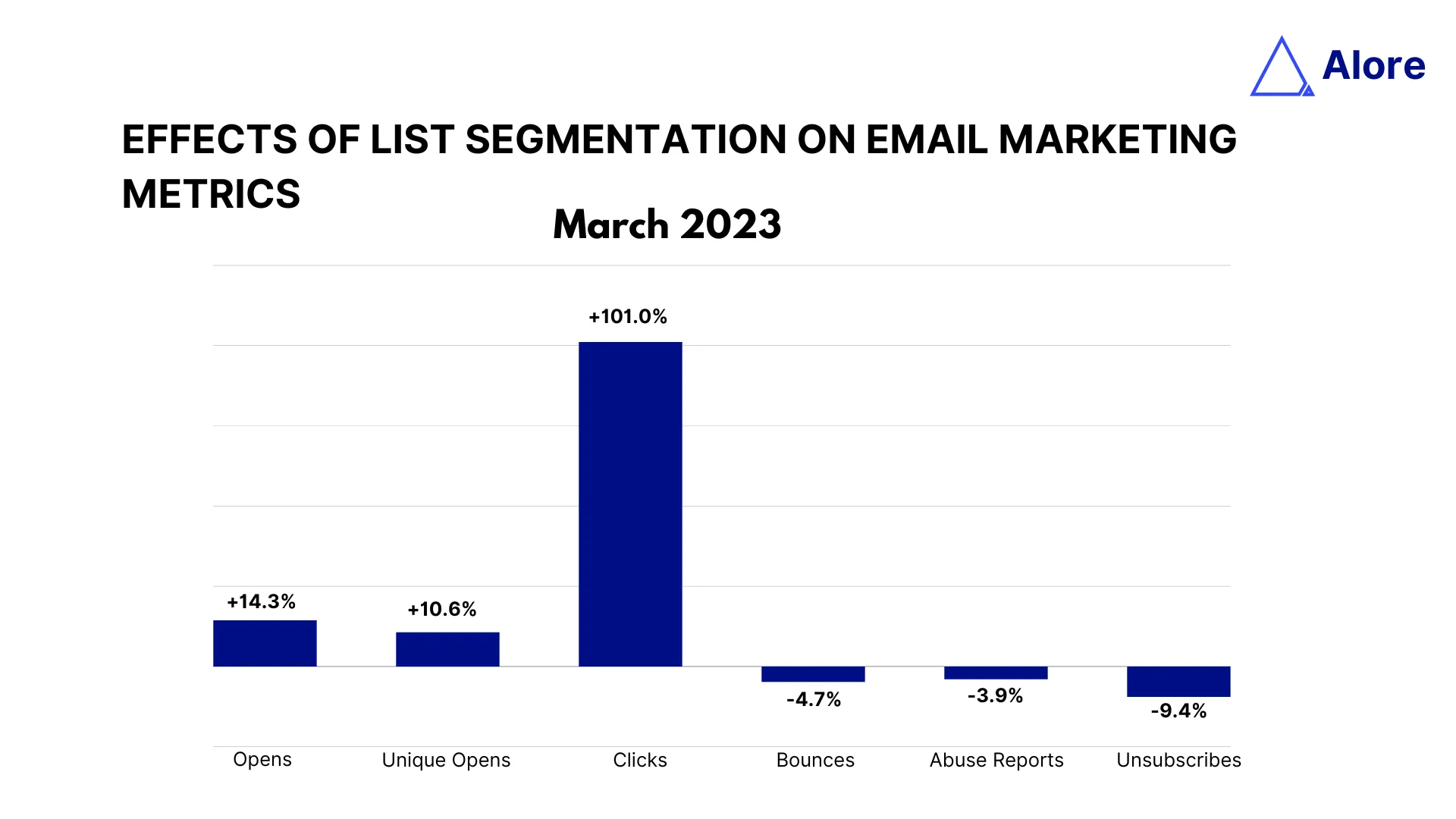
"Hi, do I know you?"
How many times have you thought this while going through your spam folders and emails?
It's off-putting to receive a completely impersonal or irrelevant message, right?
Here's where email list segmentation can come to your marketing email rescue.
Email list segmentation is the process of dividing your email list into smaller segments based on specific criteria like demographics, buying habits, or interest areas. You might be thinking, "That sounds like a lot of work. Is it worth it?" The answer is a resounding yes.
When you segment your email list, you're essentially tailoring your messages to align with the unique interests, needs, and preferences of different subscriber groups. This means your emails are more likely to resonate with your recipients. It's like hosting a dinner party and serving each guest their favorite dish. They'll appreciate the effort and thoughtfulness, leading to higher engagement.
The Impact of List Segmentation on Open Rates
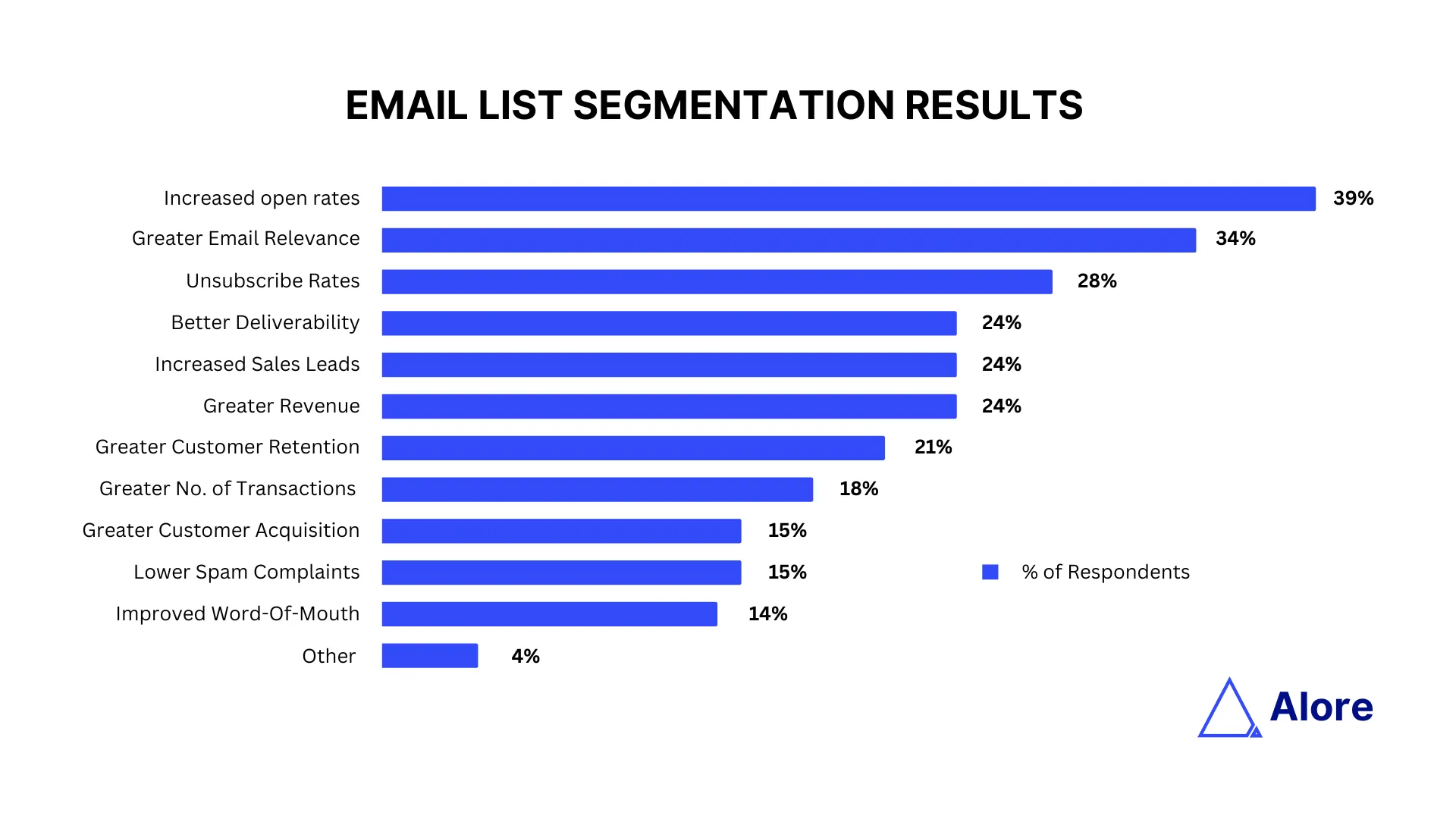
Let's talk numbers. After all, they don't lie.
According to a study by Mailchimp, segmented email campaigns have a 14.31% higher open rate than non-segmented email campaigns. That's a significant difference!
The reason behind this impact is straightforward. When your you send emails that are relevant and cater to the recipient's interests or needs, they're more likely to open them.
Consider this: wouldn't you be more inclined to open an email that offers a discount on your favorite book instead of a general email promoting a wide range of books?
Segmentation allows you to send the right message to the right people at the right time.
This boosts your open rates, enhances your overall engagement rates, increases conversions, and builds stronger relationships with your subscribers. That's a whole lot of benefits from just one strategy!
Keeping Your Email List Fresh: A Practical Guide
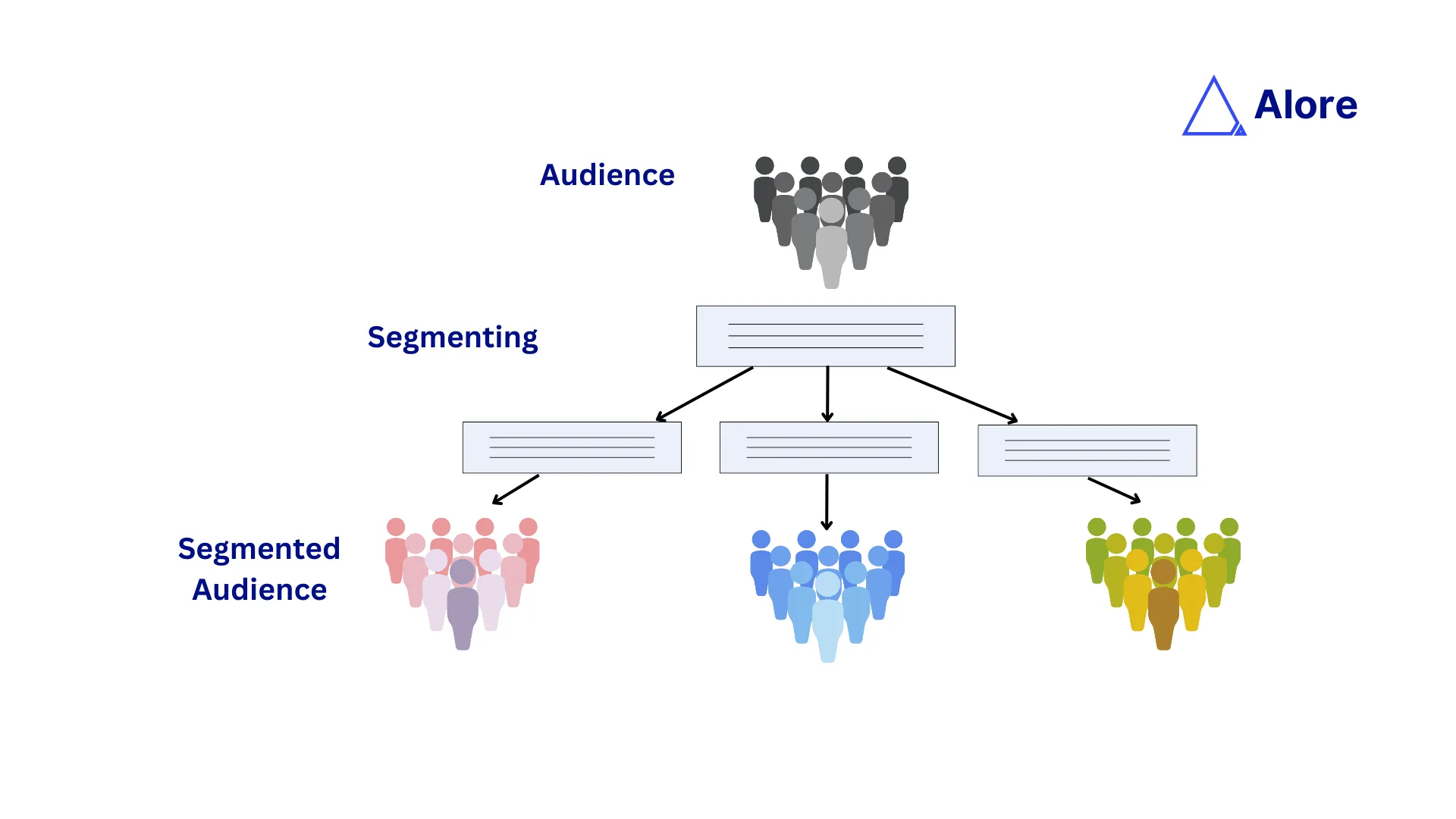
As much as we'd love for our email list to remain evergreen, that's not the case.
Subscribers may change their email addresses, lose interest, or simply decide they don't want to hear from you anymore (as heartbreaking as that may be).
Therefore, it's crucial to keep your email list fresh and updated.
Here are some practical steps to help you do that:
- Regularly remove inactive subscribers.
- If a subscriber hasn't engaged with your emails in a long time, chances are they won't start now. It's best to remove such subscribers from your list, keeping it healthy and active with more subscribers.
- Implement a double opt-in.
- This requires new subscribers to confirm their email addresses before they start receiving your emails. It helps ensure that your list only contains people who genuinely want to hear from you.
- Offer easy unsubscribe options.
- While it may seem counterintuitive, making it easy for people to unsubscribe can actually help your email list. It allows uninterested subscribers to leave, enhancing the overall engagement rate of your list.
- Keep your content relevant.
- This goes back to segmentation. By sending relevant content, you increase the chances of your subscribers staying interested and engaged, thus maintaining a vibrant and active email list.
Remember, the quality of your email list is more important than the quantity. A smaller list of engaged subscribers is more valuable than an extensive list of subscribers who never open your emails.
Email list segmentation and management may seem daunting initially, but the results can be truly rewarding once you get the hang of it.
21 Proven Strategies to Boost Your Email Open Rates

How to Trigger Curiosity
Ah, curiosity. It's what drives us to learn, explore, and grow. And it can also compel your subscribers to open your emails. The trick is to craft subject lines that hint at something intriguing or beneficial without giving it all away. Think of it as a trailer for a movie, teasing just enough to make you want to watch the full film.
For instance, a subject line like "You won't believe what we found" could spark curiosity and lead to increased open rates. But remember, don't use clickbait or make false promises. Your content should always deliver on what your subject line implies.
Techniques for Personalizing Your Emails
Personalization isn't just about adding the recipient's name to the email (although that's a great start). It involves tailoring your email's content to align with each subscriber's interests, needs, or behaviors. This might mean sending different content to different subscriber segments or dynamically adjusting content based on subscriber data.
An example of a personalized email might include product recommendations based on a subscriber's past purchases or content related to their specific location or industry. Remember, the more relevant and personalized your email feels, the more likely subscribers will open it and engage with your content.
Strategic Use of Emojis
Emojis aren't just for texting. When used strategically, they can make your subject lines stand out, express emotions more effectively, and even save space. For example, instead of saying, "Save money on your next order," you could say, "💰 Save on your next order."
But like anything else, emojis should be used in moderation and appropriately for your audience. Not every brand or message lends itself to the use of emojis. Always consider your brand voice and the preferences of your audience.
The Art of Staying Memorable and Keeping Emails Short
In our busy lives, shorter emails often stand a better chance of being read. But short doesn't mean forgettable. Each email should deliver a clear and compelling message or offer something of value to the reader. Remember, every word counts. Make them memorable.
Asking Why a Customer Unsubscribes
Seeing a subscriber go is always tough, but their departure can provide valuable insight. Consider sending a short, polite email asking why they decided to unsubscribe. Their answers can provide essential clues about what you can improve.
The Importance of Proofreading Your Emails
Typos and grammar errors can make your emails look unprofessional and harm your credibility. Always proofread your emails before you hit send. Consider using tools like Grammarly or Hemingway App to catch any mistakes you might miss.
How to End Your Email with A Question to Spark Curiosity
A well-placed question at the end of your email can encourage your reader to open your next one. For example, you might write, "What if you could double your productivity with one simple change? Stay tuned to find out how."
Avoiding Subscriber Fatigue
Emailing too frequently can lead to subscriber fatigue, resulting in a lower email open rate. Find the right balance by monitoring your email metrics and considering your audience's preferences and expectations.
Why and When to Resend Unopened Emails
Resending unopened emails can be a powerful strategy to increase email and your open rates. After all, your subscribers may miss your first email for various reasons. However, this strategy should be used judiciously and sparingly to avoid irritating your subscribers.
Allowing Subscribers to Choose When to Receive Emails
Giving subscribers the power to choose when they receive your emails can significantly improve your open rates. This could involve allowing them to choose the day of the week or the time of day they want to receive your emails or even how often they want to hear from you.
The Power of Anticipation
Building anticipation for your next email can increase your email open rates too.
You could do this by promising valuable content in your next email or by creating a series of emails with a continuous narrative or theme.
Building Useful Content for Engagement
People are more likely to open emails that consistently provide value. Whether it's educational content, exclusive offers, or interesting news, make sure your emails offer something your subscribers want or need.
Using Quizzes to Improve Engagement
Quizzes are a fun and interactive way to engage your subscribers. Plus, they can provide valuable data about your subscribers' interests, needs, and preferences.
Solving Your Subscribers' Problems
If you can solve a problem for your subscribers, they'll be more likely to open your emails.
Identify your subscribers' common challenges or pain points and offer solutions in your emails.
Ensuring You Send Enough Emails
While you don't want to overwhelm your subscribers with too many emails, you also don't want them to forget about you. Consistently sending emails helps keep your brand top-of-mind for your subscribers.
The Power of Using Statistics
Statistics can provide credibility to your emails and make your content more persuasive. Whether it's data about the effectiveness of your products or stats about a problem your subscribers face, numbers can tell a compelling story.
Spring Cleaning Your Email List: A Guide
Regularly cleaning your email list helps ensure you're only emailing people who are interested in your content. This involves removing inactive subscribers, updating outdated contact information, and addressing deliverability issues.
The Impact of Writing Like a Friend
Writing like a friend means using a conversational tone, showing empathy, and genuinely caring about your subscribers. This can make your emails more engaging and relatable.
The Benefits of Writing to Just One Person
Even though you're emailing a list of subscribers, each email should feel like it's written just for the person reading it.
This means using the second person ("you") and speaking directly to each subscriber's needs and interests.
Investing in Your Subject Line: A Must-Do
Your subject line is the first thing your subscribers see, and it can often determine whether your email gets opened.
Spend time crafting compelling subject lines that accurately represent your content and entice your subscribers to open your email.
Tactics for Improving Email Deliverability
Deliverability issues can significantly impact your open rates.
Ensure your emails get to your subscribers' inboxes by following best email delivery practices, such as maintaining a healthy email list, using a reputable email service provider, and avoiding spammy content.
Each of these strategies has the potential to boost and increase your email open to rates. However, remember that every audience is different. What works well for one audience may not work as well for another.
The key is continuously testing, learning, and adapting your approach based on what works best for your unique audience.
Conclusion - Consistent Value in Your Email Campaigns

When done right, email marketing can be a potent tool for any business especially small businesses.
Recap of Key Points
Let's quickly rewind and revisit what we've learned together.
We've talked a lot about how to improve and increase your email open rates.
You know, those little tricks to hook your subscribers?
Like kindling their curiosity with irresistible subject lines and making them feel special with personalized emails. And let's not forget about the power of being brief yet unforgettable and knowing the right moment to hit resend on those unopened emails.
You've learned how to get creative with emojis and how to challenge your subscribers with interactive quizzes.
We've shared insights on addressing your subscribers' needs and sticking to a consistent email schedule.
Plus, who knew numbers could be so convincing?
Using hard data can amp up your credibility and help you know when to tidy up your email list.
We've also reminded you of the beauty of writing like a buddy and tailoring your message as if you're talking to just one person.
And never underestimate the gravity of a compelling subject line when it comes to getting your emails opened. Last but not least, keep your eyes on email deliverability to ensure your messages land exactly where they're supposed to - right in your subscribers' inboxes.
The Importance of Ongoing Improvement and Testing
Now, the real talk: email marketing isn't a "set it and forget it" kind of thing.
It's a continuous journey of tweaking and testing. Your golden formula for one campaign might not be the magic key for the next.
So keep an eagle's eye on your metrics, test out different strategies, and make changes based on what you see.
Email marketing is a learning curve filled with many "Aha!" moments. Maybe a certain email subject line sends your open rates skyrocketing, or your subscribers fancy getting emails at a specific time of the day.
Things change, trends evolve, and staying light on your feet and adapting as you go is super important.
Final Thoughts
As we wrap things up, always remember your email address book subscribers are more than just a name on a list.
They're real people with full schedules, jam-packed inboxes, and unique likes and dislikes. Your mission, should you accept it, is to slice through the clutter and deliver content that speaks to them on a personal level.
That sounds like a tall order, right?
But hey, don't stress! You're armed with a toolkit of knowledge and strategies. You're ready to implement these and watch your email open rates climb.
So, when you do see those numbers ticking upward, give yourself a pat on the back.
And when you face challenges, they're just opportunities to learn and grow.
Here's the thing about email marketing - it's not a straight road. It's a winding path with ups, downs, twists, and turns. But with determination, focus on adding value, and the right set of tools; you're well on your way to forging meaningful connections and hitting those business targets.
Don't forget that email marketing is more than just about open rates. It's all about building and nurturing relationships. It's about delivering value, stirring up conversations, and inspiring action. So, while open rates are important, they're just one piece of the puzzle.
Remember, the number of people on your email list is less important than the quality of those contacts – focus on those genuinely interested in your content and let go of the ones who are longer interested.
Stay curious, keep learning, and, most importantly, have fun along the way.

